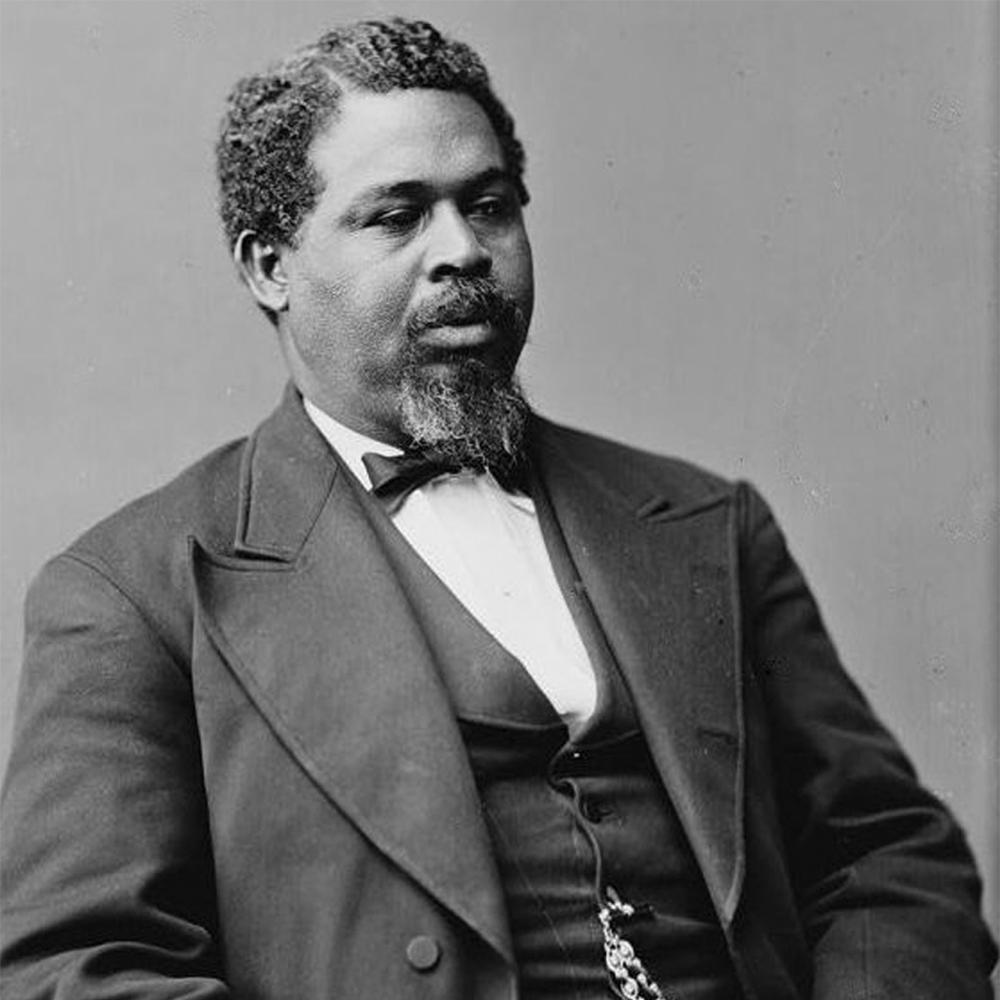Two long pulls and a jerk at the whistle cord: That produced the sound echoing in the dark salty air on May 13, 1862, as the CSS Planter stealthily glided against the tide of Charleston Harbor, passing Fort Sumter. This signal indicated to the night watchman that all was “business as usual.” But there was nothing usual about this boat easing along the coast of South Carolina. Concealed in the bowels of the craft was a cluster of men, women, and children, risking their lives to be free. At the helm of the steamer was Robert Smalls, an enslaved man who had worked his way from deckhand to pilot on this vessel, clothed in a white shirt and dress jacket. At approximately 3 a.m., he had quietly lit the engines and smuggled the others onboard. He led the steamer gently through the harbor, past the last sentinel, straight into enemy territory. As day broke, the closest blockading vessel, the USS Onward, caught sight of the rebel ship, and made preparations to fire. However, when Union Captain F. J. Nickerson saw the Confederate flag lowered and a “white flag” being raised (actually a bed sheet), the attack ceased. As the Planter steered alongside the Union ship, Smalls raised his hat high and confidently shouted, “Good Morning, Sir! I have brought you some of the old United States’ guns, Sir!”
And so, Smalls delivered a Confederate armed transport ship as a trophy to the Union army. It included Confederate artillery and a Confederate code book that gave him the signals needed for the escape. By this bold act, Smalls’s family and twelve other runaway slaves won their freedom. Robert Smalls became a national hero.
Bringing this story to the public is the exhibit “The Life and Times of Congressman Robert Smalls” now on view through March 2013 at the South Carolina State Museum in Columbia and supported by the South Carolina Humanities Council. “The exhibit has been touring continuously for over three years, has been to twelve venues, and has been seen by over eighty thousand people,” states Jeff Powley, the museum’s education manager. “Robert Smalls is now included as a ‘must know’ subject in the South Carolina Education Standards for third and eighth grade.”
Robert Smalls’s determination was said to have come from his mother, Lydia. “He never felt that he was not free,” says Helen Moore, curator of the Robert Smalls Collection and great-granddaughter of Smalls. Popular belief holds that his father was Henry McKee, the owner of the plantation where his mother was enslaved. Moore notes, “[He] was fond of Robert as a child, and he took him everywhere. He taught him all kinds of things . . . he even taught him how to fish.” After the age of twelve, McKee sent him to Charleston to work, where Smalls kept one dollar of his weekly pay. But he saved his earnings, however little, and at seventeen he married Hannah Jones, an enslaved hotel maid. Once their first son was born, it worried him that he did not have possession of his wife and child; so he negotiated with her owner to purchase them for $800.
Capturing the Planter earned Smalls his emancipation, a monetary reward, and an audience with Abraham Lincoln, beginning his life of public leadership. Determined to have all the tools he needed to further succeed, Smalls hired a private tutor, studying before dawn to learn to read and to write. During Reconstruction, Smalls went on to become a state senator and a United States congressman for South Carolina. His most important legislation launched the public school system in his home state. Eventually, Smalls resided again in the coastal town of Beaufort, South Carolina, purchasing the home of his former owner at 511 Prince Street. Despite the fact he was now a well-educated and free man, he still lived in an environment hostile to black equality. “In the family lore, I never had the impression that he got discouraged,” says Moore, “he was a very determined man and there were things he was just going to do. [Smalls] has been considered to be the Martin Luther King of his day.”
In May of this year, the Robert Smalls Commemoration Weekend marked the sesquicentennial anniversary of his daring escape, introducing his story to a new generation. The exhibit opened at the Charleston Museum, an institution that, ironically, was standing at the time of Smalls’s heroic act. With furniture from his Beaufort home, artifacts, and photographs, the exhibit also has models of the ships that Smalls piloted—the Planter and the USS Keokuk.
The exhibit culminates with pictures of the U.S. Army Vessel Major General Robert Smalls, the first military vessel named after an African American, which was commissioned in 2007. It is a working tribute to Smalls’s legacy, a way of keeping relevant his story of overcoming challenges in the pursuit of freedom. An anonymous quote from the exhibit’s guest book states, “If I had known about Robert Smalls when I was coming up, my life would have been different.”


